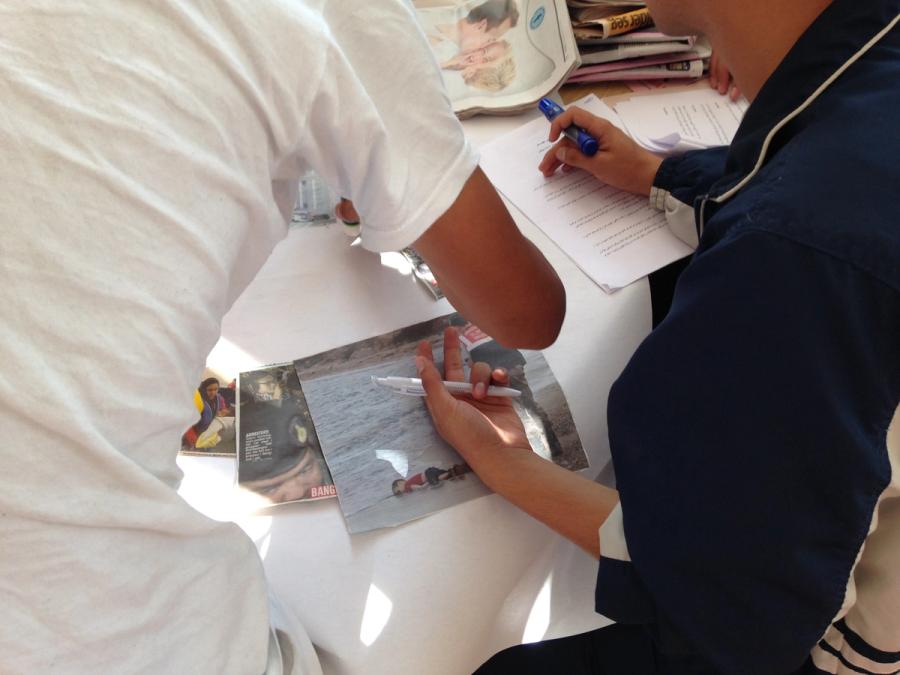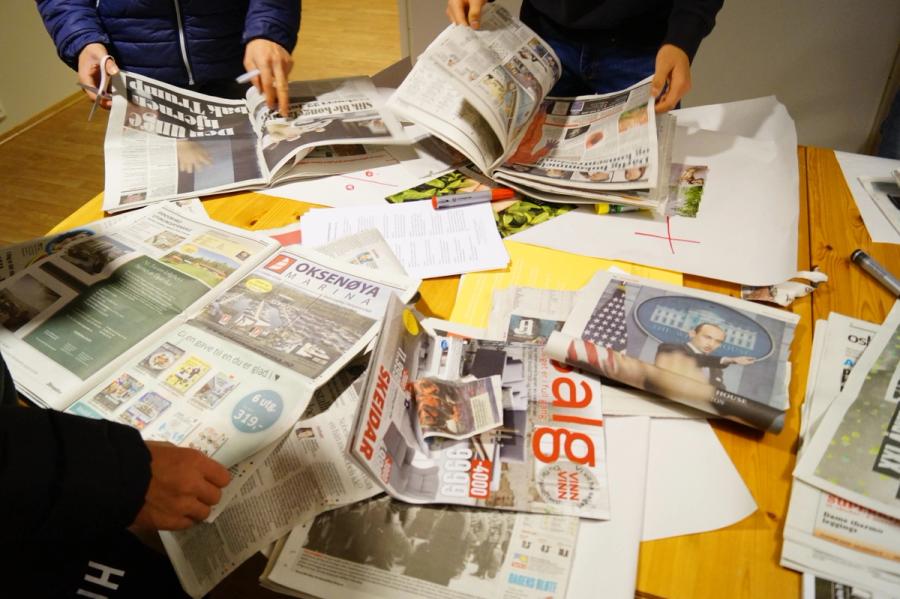Foto: Good Good Good on Unsplash
Activity:
What´s on the news?
Much of what is being reported in the newspapers can be understood in a human rights perspective. When people are suffering, human rights are often being violated. When people are living good lives, human rights are being respected.
Photo: Good Good Good on Unsplash
Quick facts

Human rights • Democracy and citizenship

Youth school • High school • Adult education • Organizations and others

Human Rights

Ca 1 hours

Materials: Newspapers and magazines. A flip chart. A pair of scissors and a glue stick. The Universal Declaration of Human Rights for each group.
Activity goals
- Understand that human rights are about our everyday lives.

Based on an activity from the book "Build bridges not walls - 97 exercises in multicultural understanding and conflict management", Lillian Hjorth and Enver Djuliman (Humanist forlag 2007).
Instructions
- Divide the participants into small groups of 3-5 persons. Give each group a pair of scissors, a glue stick, a flip chart and newspapers/magazines. The task is to cut out photos/images/illustrations from the newspaper/magazines that show that: A) human rights are being respected. B) human rights are being violated.
- The pictures shall be pasted on a flip chart (e.g. human rights being respected on the upper half; human rights being violated on the lower half). Write the number of the relevant article in the Universal Declaration of Human Rights beside each picture. The participants should be encouraged to use their imagination when interpreting and giving meaning to the pictures (20-30 minutes).
- When finished, the groups present their work and explain their choices to the others in the plenary session. Comments and feedback are welcomed.
Reflection
- Do you think you are usually well informed about human rights’ situation in your country?
- Are there examples from your everyday life that you can link to human rights?
- How can the media and the press contribute to the realization of human rights?
- What about social media? Find examples of posts on Facebook, Twitter, or similar that have uncovered human rights violations.
- How can social media and the press contribute negatively from a human rights perspective?
Debriefing
Human rights influence our everyday lives. So much of what is happening in the world and being reported in newspapers can be understood in a human rights perspective. When there are positive developments, they can very often be seen in connection with the realisation of human rights. Negative developments are often related to the violation of human rights.
Tips to the facilitator
- This activity can be a good opportunity for the facilitator to underline that worldwide, the human rights situation is improving every year. More children are going to school, the situation for women and minorities is improving, more people live longer and so on. Focusing on positive developments is very important when teaching human rights to young people.
- This group work is also good for focusing in particular on freedom of expression and the important role media plays in our societies. Journalists and media workers are often the ones to decide what we should understand as important challenges in our communities.



